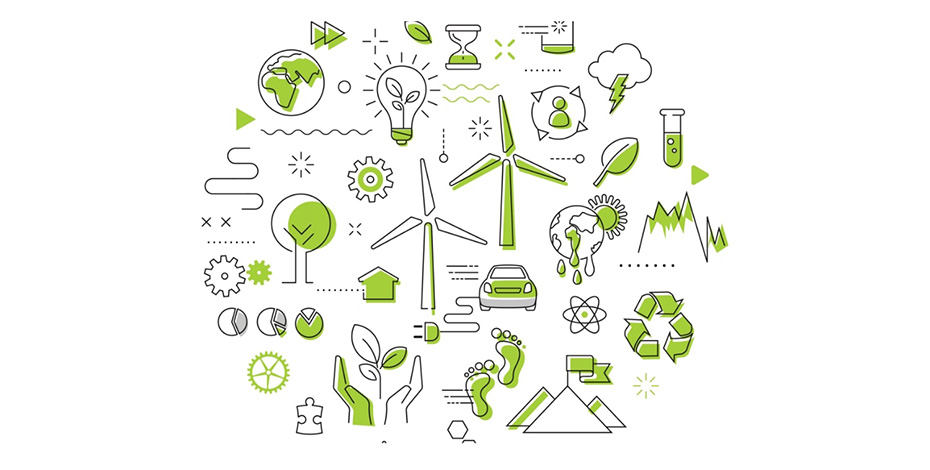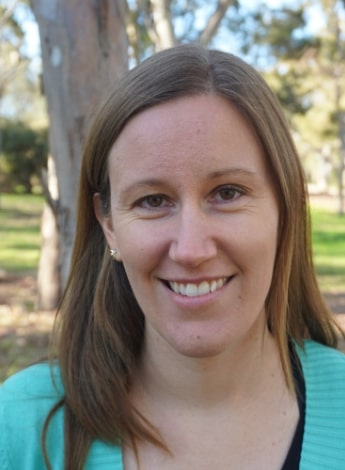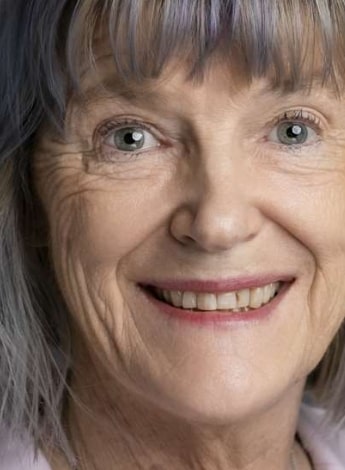
A question of climate

As the APA prepares to launch its first position statement on climate change and sustainability, we ask why you should be concerned and what you can do.
According to the World Health Organization, climate change is the greatest threat to global health this century.
Air pollution, disease, extreme weather events, forced displacement, food insecurity and pressures on mental health are all contributing factors to the deaths of around 13 million people globally each year.
Healthcare is also one of the biggest contributors to carbon emissions, accounting for about seven per cent of Australia’s total (Malik et al 2018).
The impact of climate change on health and the way healthcare affects the environment are well documented and the conversation has moved beyond questions of evidence to what can be done to mitigate the impacts.
Here, Climate and Health Alliance CEO Roland Sapsford and physiotherapists Sarah Curran APAM, Kerstin McPherson APAM, Dr Jessica Stanhope APAM MACP, David Duindam and Deb Sutherland APAM MACP explore the issues in response to some questions.
How does the changing climate affect health?

Roland Sapsford is the CEO of the Climate and Health Alliance.
Roland Sapsford: We’re living creatures and our health and wellbeing—physical, mental and cultural—depend on the health of the natural world.
Climate change poses a huge risk to the natural world’s systems—the weather and the oceans, for example.
Most people will be familiar with the climate-related bushfires in 2020 and their huge implications for public health.
There were 33 direct deaths and then more than 400 deaths and around 3500 hospitalisations attributed to the smoke that blanketed the east coast.
Climate change also affects the social and environmental determinants of health, such as clean air, safe drinking water, nutritious food and just having a place to live.
Sarah Curran: One in five deaths worldwide is currently related to fossil fuel air pollution (Vohra et al 2021).
That figure doesn’t account for the multitude of chronic health issues including cardiorespiratory disease, certain cancers and congenital impairments.
We see more trauma in the aftermath of extreme weather events such as floods, cyclones and fires.
The incidence of heat stroke and communicable diseases is increasing as parts of the planet become more uninhabitable and humans and wildlife are displaced.
Supply chains are also increasingly being affected by the impact of extreme weather on crops and transport.
We are experiencing this in Australia as well as in other parts of the world.
Jessica Stanhope: We are going to see more chronic conditions as a result of climate change and we may start to see conditions that we don’t normally come across.
At the moment, we are expecting diseases like Ross River virus to increase because of the floods.
There are long-term issues with Ross River virus to do with arthritis.
We need to make sure that physiotherapists are aware of that and are asking the right questions, not just assuming that it’s some other condition.
If a patient has had Ross River virus, it might change the way that we approach treatment.
Deb Sutherland: Climate change impacts and risks are becoming increasingly complex and specific events should not be seen as individual stressors.
The simultaneous occurrence of multiple climate hazards cause cascading risk situations as has occurred with the interaction of the current energy crisis with fires and flood events.

Sarah Curran APAM is a New South Wales-based physiotherapist who works in animal health and wildlife rescue.
How does the changing climate affect healthcare and specifically physiotherapy?
Roland: Extreme weather events affect facilities.
They affect the ability of those facilities to operate and the ability of staff and clients to arrive and get home again.
They also affect access to power.
So there’s more stress on providers.
Meanwhile, climate change is increasing the drivers of need for services so you get higher needs and more demand at the same time.
On top of that, there’s the retention and recruitment of staff, which is already a problem for health systems in places like the Northern Territory.
Then you have the whole issue of what you need to invest to build up appropriate health systems and the scale of resources required to provide the infrastructure to go on delivering those health systems.
Sarah: As physios, we’re often trying to encourage physical activity as part of treatment.
Not only is it unpleasant to be outside during extreme weather, it can also be detrimental to our health, especially in extreme heat or dangerous storms or when the air quality is poor.
As a motivated exerciser, I like to get up and go for a walk or jog before it gets hot—I’m not at all heat tolerant.
If it’s above 20 degrees when I wake up, I really struggle to push myself.
Think about how an unmotivated person might feel about going outside to exercise in relative conditions.
Sure, you don’t have to go outside to move your body but I do think that being able to access clean air and a safe environment that we can move in is extremely important to our ongoing health.
Jessica: One of the areas that I’m interested in is green space and nature exposure in health.
If we lose those spaces or the diversity of those spaces, then that affects a range of health conditions.
Mental health is probably the biggest one that’s being investigated, but pain, cardiovascular disease and respiratory illness are in there as well.
What is the impact of physiotherapy on the environment?

Dr Jessica Stanhope APAM MACP is a lecturer at the University of Adelaide and an APA Research Physiotherapist, with a focus on environmental and occupational health.
Roland: Because physiotherapists deal with people’s bodies, they are aware of us as biological beings and understand that our physical health and wellbeing affect our state of mind and ability to operate in the world.
Physiotherapy also helps to avoid many more emissions-intensive interventions, including pharmaceuticals, scans and tests.
Sarah: We already have a positive impact on the environment by being the low-carbon and low-waste alternative to high-carbon and high-waste surgical procedures in a lot of cases.
Our services can delay, or in some instances entirely prevent, the need for surgery.
Kerstin McPherson: We had an assessment for third-year students, at Charles Sturt University, asking them to respond to a statement on climate change and to link it to physiotherapy practice.
They were excited and most saw it as an important component to include within their physiotherapy program, and questioned why it had not been discussed earlier.
They saw the environmental aspect of physiotherapy as a way to promote the profession.
The enthusiasm from students was exciting to see, creating hope for the future and for physiotherapy.
David Duindam: Physiotherapy is a low-emissions healthcare discipline, a relatively positive part of the healthcare sector as far as its environmental impact is concerned.
Physios use far fewer single-use plastic items than some other health professionals, generate less waste and use less energy.
Our treatments are less carbon-intensive. We don’t have to rely on pharmaceuticals, which have a huge carbon footprint.
As a profession, if we encourage more people to access physio, we can reduce the overall healthcare sector’s footprint significantly by reducing people’s need for other, more carbon-intensive services.
Why should physios need to consider climate change and sustainability issues?

Kerstin McPherson APAM is a lecturer in physiotherapy at Charles Sturt University in New South Wales.
Roland: The Climate and Health Alliance is trying to create a powerful health sector movement for climate action.
If we’re successful, the health sector will both champion climate action and do its part in working towards a more ecologically sustainable, just and resilient future for Australia.
Our theory is that health professionals are trusted and respected voices and when they speak, people are likely to listen.
We aim to help people in the health professions to use that trust wisely, to give themselves and the people they work with the ability to understand and act on the climate crisis and to encourage others to do the same.
Sarah: Because climate heath is human health. Plain and simple.
Allied health professionals are perfectly placed as trusted and educated professionals to take charge of influencing the behaviour of our society if we come together and lead by example with strong actions.
Our environment is the ultimate bio in biopsychosocial, from which we are inseparable.
Jessica: The medical model is very much about drugs and surgery and they aren’t good for the environment.
There are times when those things are absolutely required, but I do think physio has a role in prevention, particularly if we can treat people before it gets to the point where they need surgery.
If we can promote our role and make physiotherapy more accessible, we may be able to reduce the impact that the health system as a whole has on the environment.
We are pretty lucky in that most of what we do doesn’t use huge amounts of resources compared with other health disciplines.
Kerstin: It’s not just that everything is going to get a bit warmer.
There will be huge changes in the environment—more bushfires, more flooding—and what will be the impact of that?
There are going to be injuries, respiratory issues—the air quality’s going to change and so there will be more need for respiratory physios.
If that’s the future, then what are you doing about it? Because I think people need to futureproof their practices and the way they do things.
For example, if your staff can’t get to the practice because of flooding, how are you going to manage your practice and staffing loads?
Could they do telehealth that day instead?
People in private practice probably do have some contingencies but they may not have thought about the practical aspects of what’s going to change and how to deal with it.
If there is an increase in respiratory conditions due to air pollution and greater humidity, you could prepare your practice by training staff and encouraging them to upskill now.
Research shows the benefits of pelvic floor physio with managing incontinence versus incontinence pads, and this should be promoted as a way to combat the pollution from incontinence pads, for example, which are rapidly becoming a bigger waste problem than baby nappies.
There are so many ways to ‘sell’ the environmental benefit of physiotherapy.
This is the kind of service we can provide to our community and healthcare funders to reduce our environmental impact.
This also needs to be included as a component of all clinical research.
David: If physiotherapy’s mandate is to improve people’s function and health, then we can’t ignore climate change and sustainability.
More than most other health disciplines, physio improves people’s health by changing their lifestyle factors.
That almost always has a positive climate or sustainability co-benefit.
For example, if I’m suggesting that a patient should be walking more to help their chronic low back pain, then why not suggest they walk to the train station two days a week instead of drive?
They would be reducing their emissions, saving money on petrol and helping their health.
I’m overwhelmed, where do I start?

Deb Sutherland APAM MACP is an APA Musculoskeletal Physiotherapist and works in both musculoskeletal and occupational health physiotherapy.
Roland: We live in a world with a lot of climate inertia built up so things are going to get worse for a while even as we try to stop them from becoming worse still.
That has a huge impact on people’s state of mind.
However, the flip side is that action on climate change is the greatest public health opportunity the world has got.
We know the problems but we also know a lot of the solutions and the scale of it all means that the benefits from acting are huge.
Find something that you feel confident you can act on now and give yourself some agency to start with.
The biggest thing is getting past the point of ‘it’s too big and I can’t do anything’, because both problems and solutions are created by millions of small things.
Health professionals might think about what they, personally, can control in their daily work environment.
Ask whether there’s a way we can do this differently.
How can we reduce waste and energy use, not through huge projects, but by looking around to see what we can do?
You’re not alone.
Once we open the door to the topic, it’s impossible to shut people up; everybody is concerned and wants to do something.
So look around you, think about what you can affect, talk to your colleagues, talk to your friends, talk to your managers.
There might even be situations where it’s appropriate to talk to your clients to help them understand how some of the challenges they face are affected by climate change.
Bringing the reality of climate change into the way we practise helps to normalise that conversation.
How do we manage this, what actions can we take to deal with climate change and what can we do to prevent it from getting worse?
Sarah: It’s easy to be overwhelmed by the climate crisis.
It’s much easier to shy away and put it in the too-hard basket.
But the exciting and reassuring thing is that physiotherapy is already such a carbon-friendly profession.
We already have powerful tools that cost nothing in terms of carbon, including our listening, communication and coaching skills, the use of our hands and getting people to move their bodies.
We can advocate that we are doing environmental physiotherapy because of these foundational skills.
A personal action that everyone can take is to know where your vote goes.
We can all take small steps that we’re in control of, but ultimately, if we have people in power who aren’t looking after our health or the environment, then we are very poorly placed for a healthy future.
Jessica: If you start thinking, ‘What are all the ways I have an impact on the environment?’ it becomes very depressing, very quickly.
We need to be aware and acknowledge the complexity and realise that people can’t be perfect.
When there are unrealistic expectations, people do switch off.
There are many things that we think about doing because they seem like a good idea and they are marketed to us as being sustainable, green options, but sometimes it’s not that simple and it’s often context-specific.
Having hard and fast rules or recommendations can be dangerous because it gives us this perception that we are doing the right thing when we might not be and that’s often because of irresponsible marketing.
Deb: We use a risk management approach to look at the issues—an evidence-based, comprehensive and systematic approach.
In the past few years, instead of doing this piecemeal, people have been looking at it systematically and saying, well, where can I take my practice—because 60 per cent of us are in private practice—and where am I going to start?
It’s a process and people work better with a process.
This approach begins with checking what is already in place.
Has your building got solar panels (this may not be in your control) or can you pick your own energy supplier, and do you recycle?
Are you practising using low carbon models of care and prioritising preventive healthcare, sourcing consumables responsibly and using green energy supplies?
The next thing is to know the scope of your project—the reason for the assessment and the stakeholders involved.
Then you can start evaluating risks and opportunities, setting priority areas for action and reviewing the effectiveness of outcomes.
These assessments are completed in the context in which a physiotherapist works and interventions are tailored to their specific areas of work and circumstances.
An effective road map to sustainability in healthcare integrates four principles.
First, mental and physical health depend on a healthy natural environment.
Second, you’ve got to show leadership. You have to educate and engage everyone and you need to collaborate.
Third, you need to adapt to climate change—including the risk of fires, floods, all those things—and that has to be supported by your efforts to reduce your carbon footprint.
Finally, your actions should not adversely affect health, so your approach needs to be accurate, evidence-based and flexible because we don’t know what’s going to happen in the future.
Within that model, you can work in any situation.
You can work in a hospital; you can do community health; you can be a one-person practice or be in a large practice.
What can I do to make my practice more sustainable?

David Duindam is a Queensland-based physiotherapist working in private practice.
Sarah: Start by assessing your clinic’s carbon footprint.
There are calculators available online and councils often have sustainability officers who can help.
If you don’t know where you stand, it’s hard to know where you can make meaningful changes.
You can also join an advocacy group—there are a few out there full of healthcare professionals.
It is easy to feel like you’re alone and it’s too overwhelming, so being part of a community will help.
Consider getting rid of low-value machines in your clinic, particularly devices with poor evidence or devices that don’t get used very often.
Buy second-hand equipment where possible and try to recycle or rehome before chucking things out.
Try to use Australian-made products and suppliers.
Make use of things people already have available to them at home before sending them to Kmart for more plastic.
Lead by example.
David: In a nutshell, it’s a matter of reducing energy use, managing your waste better, decarbonising the supply chain and working on behaviour change for staff.
There are often some low-hanging fruit within these areas and that’s a good place to start.
Examples include having a policy where you turn off electronic equipment at the end of each day, having two bins in each room, one for all the paper and plastic the physio uses and another for general waste, and making sure they are used appropriately.
You also need someone who’s physically there at the facility to drive this transition—a sustainability or climate champion.
Talk to your reps and the companies that you buy stock from to ask about products with less plastic and packaging.
If lots of hospitals and clinics do that, it puts market pressure on suppliers.
The biggest chunk of the pie for healthcare as far as emissions go is the supply chain—it’s around 70 per cent.
If we can get virgin plastic out of the physio products that we use, it will make a massive difference in the long term.
Jessica: Consider working outside, where people can appreciate the natural environment and what we have to lose.
When I was working clinically, I’d often tell people to spend some time in the garden or walk in the park.
I had no idea that there was actually evidence to suggest that it was better than doing indoor things; it just seemed to make sense.
There are different approaches that we can take.
We can advise our patients to spend time in green, preferably biodiverse, spaces.
We can also see whether we can actually spend time with our patients in those environments.
From a private practice perspective, it’s quite challenging because our appointment times are so short.
However, there are huge opportunities to get green spaces into rehab, hospital and aged care environments.
The other aspect to think about is whether patients can access outdoor spaces once they are discharged from rehab.
Can they confidently get to their own backyard?
It can make such a big difference to someone—to be able to potter around the garden a bit or just sit outside and feel safe doing that—and it’s not difficult to assess that by taking the patient outside to see how they go on a path or walking over grass.
Kerstin: When you’re doing balance exercise classes or rehab and you start talking with your patients, maybe you can focus on aspects of the environment—not just things like putting solar panels on your roof, but something close to home, close to the local community, that can be showcased and discussed.
Even the magazines that you put in your waiting room don’t all have to be about sports. Put in an environmental one.
Talk about the environment with patients when you’re having conversations during treatment.
- References and resources
-
References
Malik, A., Lenzen, M., McAlister, S., McGain, F. ‘The carbon footprint of Australian health care.’ The Lancet Planetary Health. 2018 Jan; 2(1): e27-e35. https://doi.org/10.1016/S2542-5196(17)30180-8.Vohra, K., Vodonos, A., Schwartz, J., Marais, E.A., Sulprizio, M.P., Mickley, L.J. ‘Global mortality from outdoor fine particle pollution generated by fossil fuel combustion: Results from GEOS-Chem.’ Environmental Research, Volume 195, April 2021. https://doi.org/10.1016/j.envres.2021.110754.
Resources
The Climate and Health Alliance
caha.org.auThe Environmental Physiotherapy Association
environmentalphysio.comGlobal Green and Healthy Hospitals
greenhospitals.orgThe World Health Organization
who.int/health-topics/climate-changeDepartment of Planning, Industry and Environment, NSW Government. Climate Risk Ready NSW Guide: Practical guidance for the NSW government sector to assess and manage climate change risks, 2021. tinyurl.com/67B39AN
Duindam, D. ‘An evidence-based guide for decarbonizing physiotherapy clinics.’
Environmental Physiotherapy Association, 2022.
tinyurl.com/X3W8I9Q
© Copyright 2024 by Australian Physiotherapy Association. All rights reserved.





